 Open Access
Open Access
ARTICLE
Maddina Dinesh Kumar1,#, S. U. Mamatha2, Khalid Masood3, Nehad Ali Shah4,#, Se-Jin Yook1,*
CMES-Computer Modeling in Engineering & Sciences, DOI:10.32604/cmes.2025.074680
(This article belongs to the Special Issue: Computational Intelligent Systems for Solving Complex Engineering Problems: Principles and Applications-III)
Abstract Fluid dynamic research on rectangular and trapezoidal fins is aimed at increasing heat transfer by means of large surfaces. The trapezoidal cavity form is compared with its thermal and flow performance, and it is revealed that trapezoidal fins tend to be more efficient, particularly when material optimization is critical. Motivated by the increasing need for sustainable energy management, this work analyses the thermal performance of inclined trapezoidal and rectangular porous fins utilising a unique hybrid nanofluid. The effectiveness of nanoparticles in a working fluid is primarily determined by their thermophysical properties; hence, optimising these properties… More >
 Open Access
Open Access
ARTICLE
Adnan Ashique1,#, Khalid Masood2, Usman Afzal1, Mati Ur Rahman2, Maddina Dinesh Kumar3, Sohaib Abdal3, Nehad Ali Shah1,*,#
CMES-Computer Modeling in Engineering & Sciences, DOI:10.32604/cmes.2025.072523
Abstract This study outlines a quantitative and data-driven study of the mixed convection heat transfer processes that concern Cu-water nanofluids in a Γ-shaped enclosure with one to five rotating cylinders. The dimensionless equations of mass, momentum, and energy are solved using the finite element method as implemented in the COMSOL Multiphysics 6.3 software in different rotating Reynolds numbers and cylinder geometries. An artificial Neural Network that is trained using Bayesian Regularization on data produced by the COMSOL is utilized to estimate the average Nusselt numbers. The analysis is conducted for a wide range of rotational Reynolds… More >
 Open Access
Open Access
ARTICLE
Ahmed K. Ali1, Jungpil Shin2,*, Yujin Lim3,*, Da-Hun Seong3
CMES-Computer Modeling in Engineering & Sciences, DOI:10.32604/cmes.2025.073871
Abstract Single-signal detection in orthogonal frequency-division multiplexing (OFDM) systems presents a challenge due to the time-varying nature of wireless channels. Although conventional methods have limitations, particularly in multi-input multioutput orthogonal frequency division multiplexing (MIMO-OFDM) systems, this paper addresses this problem by exploring advanced deep learning approaches for combined channel estimation and signal detection. Specifically, we propose two hybrid architectures that integrate a convolutional neural network (CNN) with a recurrent neural network (RNN), namely, CNN-long short-term memory (CNN-LSTM) and CNN-bidirectional-LSTM (CNN-Bi-LSTM), designed to enhance signal detection performance in MIMO-OFDM systems. The proposed CNN-LSTM and CNN-Bi-LSTM architectures are… More >
 Open Access
Open Access
ARTICLE
Asgar Ali1,*, Nayan Sardar2, Poly Karmakar3, Sanatan Das4
CMES-Computer Modeling in Engineering & Sciences, DOI:10.32604/cmes.2025.074082
Abstract Hybrid nanofluids have gained significant attention for their superior thermal and rheological characteristics, offering immense potential in energy conversion, biomedical transport, and electromagnetic flow control systems. Understanding their dynamic behavior under coupled magnetic, rotational, and reactive effects is crucial for the development of efficient thermal management technologies. This study develops a neuro-fuzzy computational framework to examine the dynamics of a reactive Cu–TiO2–H2O hybrid nanofluid flowing through a squarely elevated Riga tunnel. The governing model incorporates Hall and ion-slip effects, thermal radiation, and first-order chemical reactions under ramped thermo-solutal boundary conditions and rotational electromagnetic forces. Closed-form analytical… More >
 Open Access
Open Access
ARTICLE
Chen Pan, ChangGyoon Lim*
CMES-Computer Modeling in Engineering & Sciences, DOI:10.32604/cmes.2025.073389
Abstract Solar forecasting using ground-based sky image offers a promising approach to reduce uncertainty in photovoltaic (PV) power generation. However, existing methods often rely on deterministic predictions that lack diversity, making it difficult to capture the inherently stochastic nature of cloud movement. To address this limitation, we propose a new two-stage probabilistic forecasting framework. In the first stage, we introduce I-GPT, a multiscale physics-constrained generative model for stochastic sky image prediction. Given a sequence of past sky images, I-GPT uses a Transformer-based VQ-VAE. It also incorporates multi-scale physics-informed recurrent units (Multi-scale PhyCell) and dynamically weighted fuses… More >
 Open Access
Open Access
REVIEW
Heng Cheng1, Yichen Yang1, Yumin Cheng2,*
CMES-Computer Modeling in Engineering & Sciences, DOI:10.32604/cmes.2025.073178
Abstract The element-free Galerkin (EFG) method, which constructs shape functions via moving least squares (MLS) approximation, represents a fundamental and widely studied meshless method in numerical computation. Although it achieves high computational accuracy, the shape functions are more complex than those in the conventional finite element method (FEM), resulting in great computational requirements. Therefore, improving the computational efficiency of the EFG method represents an important research direction. This paper systematically reviews significant contributions from domestic and international scholars in advancing the EFG method. Including the improved element-free Galerkin (IEFG) method, various interpolating EFG methods, four distinct More >
 Open Access
Open Access
ARTICLE
Guo-Zhi Li1, Hua-Ping Wang1,2,*, Si-Kai Wang1, Jing-Cheng Zhou1, Ping Xiang3,4,*
CMES-Computer Modeling in Engineering & Sciences, DOI:10.32604/cmes.2025.072750
(This article belongs to the Special Issue: Advances in Numerical Modeling of Composite Structures and Repairs)
Abstract Transportation structures such as composite pavements and railway foundations typically consist of multi-layered media designed to withstand high bearing capacity. A theoretical understanding of load transfer mechanisms in these multi-layer composites is essential, as it offers intuitive insights into parametric influences and facilitates enhanced structural performance. This paper employs an improved transfer matrix method to address the limitations of existing theoretical approaches for analyzing multi-layer composite structures. By establishing a two-dimensional composite pavement model, it investigates load transfer characteristics and validates the accuracy through finite element simulation. The proposed method offers a straightforward analytical approach… More >
 Open Access
Open Access
ARTICLE
Shuoting Xiao1,*, Nikita Igorevich Fomin1, Kirill Anatolyevich Khvostunkov2, Chong Liu1
CMES-Computer Modeling in Engineering & Sciences, DOI:10.32604/cmes.2025.071961
(This article belongs to the Special Issue: Frontiers in Computational Modeling and Simulation of Concrete)
Abstract Precast concrete structures have gained popularity due to their advantages. However, the seismic performance of their connection joints remains an area of ongoing research and improvement. Grouted Sleeve Connection (GSC) offers a solution for connecting reinforcements in precast components, but their vulnerability to internal defects, such as construction errors and material variability, can significantly impact performance. This article presents a finite element analysis (FEA) to evaluate the impact of internal grouting defects in GSC on the structural performance of precast reinforced concrete columns. Four finite element models representing GSC with varying degrees of defects were… More >
Graphic Abstract
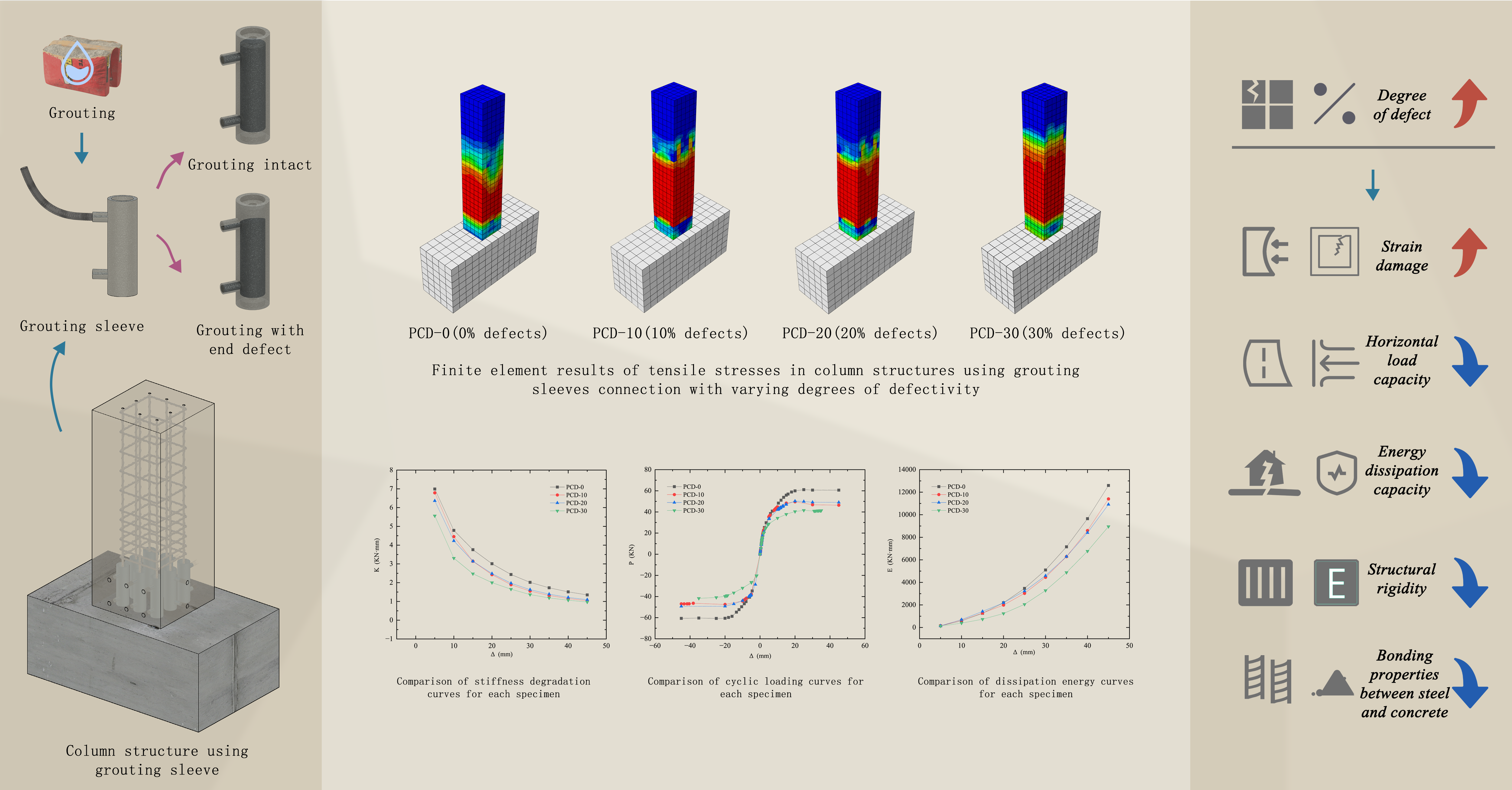
 Open Access
Open Access
ARTICLE
Jia Mi1, Zhikang Liu1, Chang Li2, Jing Wan1,*
CMES-Computer Modeling in Engineering & Sciences, DOI:10.32604/cmes.2025.074364
Abstract Recognizing essential proteins within bacteriophages is fundamental to uncovering their replication and survival mechanisms and contributes to advances in phage-based antibacterial therapies. Despite notable progress, existing computational techniques struggle to represent the interplay between sequence-derived and structure-dependent protein features. To overcome this limitation, we introduce GLM-EP, a unified framework that fuses protein language models with equivariant graph neural networks. By merging semantic embeddings extracted from amino acid sequences with geometry-aware graph representations, GLM-EP enables an in-depth depiction of phage proteins and enhances essential protein identification. Evaluation on diverse benchmark datasets confirms that GLM-EP surpasses conventional More >
 Open Access
Open Access
ARTICLE
Shuangyuan Li1,*, Zhengwei Wang2, Jiaming Liang3, Yichen Wang4
CMES-Computer Modeling in Engineering & Sciences, DOI:10.32604/cmes.2025.073896
(This article belongs to the Special Issue: Advanced Image Segmentation and Object Detection: Innovations, Challenges, and Applications)
Abstract Object detection plays a crucial role in the field of computer vision, and small object detection has long been a challenging issue within this domain. In order to improve the performance of object detection on small targets, this paper proposes an enhanced structure for YOLOv5, termed ATC-YOLOv5. Firstly, a novel structure, AdaptiveTrans, is introduced into YOLOv5 to facilitate efficient communication between the encoder and the detector. Consequently, the network can better address the adaptability challenge posed by objects of different sizes in object detection. Additionally, the paper incorporates the CBAM (Convolutional Block Attention Module) attention More >
 Open Access
Open Access
ARTICLE
Talha Farooq Khan1, Majid Hussain1, Muhammad Arslan2, Muhammad Saeed1, Lal Khan3,*, Hsien-Tsung Chang4,5,6,*
CMES-Computer Modeling in Engineering & Sciences, DOI:10.32604/cmes.2025.073021
(This article belongs to the Special Issue: Applied NLP with Large Language Models: AI Applications Across Domains)
Abstract Text clustering is an important task because of its vital role in NLP-related tasks. However, existing research on clustering is mainly based on the English language, with limited work on low-resource languages, such as Urdu. Low-resource language text clustering has many drawbacks in the form of limited annotated collections and strong linguistic diversity. The primary aim of this paper is twofold: (1) By introducing a clustering dataset named UNC2025 comprises 100k Urdu news documents, and (2) a detailed empirical standard of Large Language Model (LLM) improved clustering methods for Urdu text. We explicitly evaluate the… More >
 Open Access
Open Access
ARTICLE
Lei Zheng1,*, Hong Pan2,3, Yuelei Ruan2,4, Guoxin Zhang1, Lei Zhang1,*, Jianda Xin1, Zhenyang Zhu1, Jianyao Zhang2,5, Wei Liu1
CMES-Computer Modeling in Engineering & Sciences, DOI:10.32604/cmes.2025.074651
(This article belongs to the Special Issue: AI-Enhanced Computational Methods in Engineering and Physical Science)
Abstract As a critical material in construction engineering, concrete requires accurate prediction of its outlet temperature to ensure structural quality and enhance construction efficiency. This study proposes a novel hybrid prediction method that integrates a heat conduction physical model with a multilayer perceptron (MLP) neural network, dynamically fused via a weighted strategy to achieve high-precision temperature estimation. Experimental results on an independent test set demonstrated the superior performance of the fused model, with a root mean square error (RMSE) of 1.59°C and a mean absolute error (MAE) of 1.23°C, representing a 25.3% RMSE reduction compared to More >
 Open Access
Open Access
REVIEW
Yingying Zhou, Wenlong Shen, Tianzhe Jiao, Chaopeng Guo, Jie Song*
CMES-Computer Modeling in Engineering & Sciences, DOI:10.32604/cmes.2025.074378
Abstract As consortium blockchains scale and complexity grow, scalability presents a critical bottleneck hindering broader adoption. This paper meticulously extracted 150 primary references from IEEE Xplore, Web of Science, Google Scholar, and other reputable databases and websites, providing a comprehensive and structured overview of consortium blockchain scalability research. We propose a scalability framework that combines a four-layer architectural model with a four-dimensional cost model to analyze scalability trade-offs. Applying this framework, we conduct a comprehensive review of scaling approaches and reveal the inherent costs they introduce. Furthermore, we map the artificial intelligence (AI)-enabled methods to the More >
 Open Access
Open Access
ARTICLE
Siwei Zhang, Xiaozhou Xia*, Xin Gu, Meilin Zong, Qing Zhang*
CMES-Computer Modeling in Engineering & Sciences, DOI:10.32604/cmes.2025.073841
Abstract This study presents a coupled thermo-hydro-mechanical-fatigue (THM-F) model, developed based on variational phase-field fatigue theory, to simulate the freeze-thaw (F-T) damage process in concrete. The fracture phase-field model incorporates the F-T fatigue mechanism driven by energy dissipation during the free energy growth stage. Using microscopic inclusion theory, we derive an evolution model of pore size distribution (PSD) for concrete under F-T cycles by treating pore water as columnar inclusions. Drawing upon pore ice crystal theory, calculation models that account for concrete PSD characteristics are established to determine ice saturation, permeability coefficient, and pore pressure. To… More >
 Open Access
Open Access
ARTICLE
Asma Batool1, Fahad Ahmed1, Naila Sammar Naz1, Ayman Altameem2, Ateeq Ur Rehman3,4, Khan Muhammad Adnan5,*, Ahmad Almogren6,*
CMES-Computer Modeling in Engineering & Sciences, DOI:10.32604/cmes.2025.073149
Abstract Early and accurate cancer diagnosis through medical imaging is crucial for guiding treatment and enhancing patient survival. However, many state-of-the-art deep learning (DL) methods remain opaque and lack clinical interpretability. This paper presents an explainable artificial intelligence (XAI) framework that combines a fine-tuned Visual Geometry Group 16-layer network (VGG16) convolutional neural network with layer-wise relevance propagation (LRP) to deliver high-performance classification and transparent decision support. This approach is evaluated on the publicly available Kaggle kidney cancer imaging dataset, which comprises labeled cancerous and non-cancerous kidney scans. The proposed model achieved 98.75% overall accuracy, with precision, More >
 Open Access
Open Access
REVIEW
Deema Alzamil1,2,*, Bader Alkhamees2, Mohammad Mehedi Hassan2,3
CMES-Computer Modeling in Engineering & Sciences, DOI:10.32604/cmes.2025.070867
(This article belongs to the Special Issue: Exploring the Impact of Artificial Intelligence on Healthcare: Insights into Data Management, Integration, and Ethical Considerations)
Abstract Breast cancer diagnosis relies heavily on many kinds of information from diverse sources—like mammogram images, ultrasound scans, patient records, and genetic tests—but most AI tools look at only one of these at a time, which limits their ability to produce accurate and comprehensive decisions. In recent years, multimodal learning has emerged, enabling the integration of heterogeneous data to improve performance and diagnostic accuracy. However, doctors cannot always see how or why these AI tools make their choices, which is a significant bottleneck in their reliability, along with adoption in clinical settings. Hence, people are adding… More >
 Open Access
Open Access
ARTICLE
Guo-Feng Fan1,2, Jia-Jing Qian1, Li-Ling Peng1, Xin-Hang Jia1, Ling-Han Zuo1, Jia-Can Yan1, Jiang-Yan Chen1, Anantkumar J. Umbarkar3, Wei-Chiang Hong4,*
CMES-Computer Modeling in Engineering & Sciences, DOI:10.32604/cmes.2025.073615
(This article belongs to the Special Issue: Advanced Artificial Intelligence and Machine Learning Methods Applied to Energy Systems)
Abstract Accurate prediction of perovskite photovoltaic materials’ optoelectronic properties is crucial for developing efficient and stable materials, advancing solar technology. To address poor interpretability, high computational complexity, and inaccurate predictions in relevant machine learning models, this paper proposes a novel methodology. The technical route of this paper mainly centers on the random forest-knowledge distillation-bidirectional gated recurrent unit with attention technology (namely RF-KD-BIGRUA), which is applied in perovskite photovoltaic materials. Primarily, it combines random forest to quantitatively assess feature importance, selecting variables with significant impacts on photoelectric conversion efficiency. Subsequently, statistical techniques analyze the weight distribution of More >
 Open Access
Open Access
ARTICLE
Damodharan Palaniappan1, Tan Kuan Tak2, K. Vijayan3, Balajee Maram4, Pravin R Kshirsagar5, Naim Ahmad6,*
CMES-Computer Modeling in Engineering & Sciences, DOI:10.32604/cmes.2025.073387
Abstract A phase-aware cross-modal framework is presented that synthesizes UWF_FA from non-invasive UWF_RI for diabetic retinopathy (DR) stratification. A curated cohort of 1198 patients (2915 UWF_RI and 17,854 UWF_FA images) with strict registration quality supports training across three angiographic phases (initial, mid, final). The generator is based on a modified pix2pixHD with an added Gradient Variance Loss to better preserve microvasculature, and is evaluated using MAE, PSNR, SSIM, and MS-SSIM on held-out pairs. Quantitatively, the mid phase achieves the lowest MAE (98.76 ± 42.67), while SSIM remains high across phases. Expert review shows substantial agreement (Cohen’s More >
 Open Access
Open Access
ARTICLE
Mubashir Ali1,2, Jingzhen Li1, Zedong Nie1,*
CMES-Computer Modeling in Engineering & Sciences, DOI:10.32604/cmes.2025.073048
(This article belongs to the Special Issue: Exploring the Impact of Artificial Intelligence on Healthcare: Insights into Data Management, Integration, and Ethical Considerations)
Abstract Diabetes imposes a substantial burden on global healthcare systems. Worldwide, nearly half of individuals with diabetes remain undiagnosed, while conventional diagnostic techniques are often invasive, painful, and expensive. In this study, we propose a noninvasive approach for diabetes detection using photoplethysmography (PPG), which is widely integrated into modern wearable devices. First, we derived velocity plethysmography (VPG) and acceleration plethysmography (APG) signals from PPG to construct multi-channel waveform representations. Second, we introduced a novel multiset spatiotemporal feature fusion framework that integrates hand-crafted temporal, statistical, and nonlinear features with recursive feature elimination and deep feature extraction using… More >
 Open Access
Open Access
ARTICLE
Changyu Jeon, Younghoon Kim*
CMES-Computer Modeling in Engineering & Sciences, DOI:10.32604/cmes.2025.073030
Abstract Accurate State-of-Health (SOH) prediction is critical for the safe and efficient operation of lithium-ion batteries (LiBs). However, conventional methods struggle with the highly nonlinear electrochemical dynamics and declining accuracy over long-horizon forecasting. To address these limitations, this study proposes CIPF-Informer, a novel digital twin framework that integrates the Informer architecture with Channel Independence (CI) and a Particle Filter (PF). The CI mechanism enhances robustness by decoupling multivariate state dependencies, while the PF captures the complex stochastic variations missed by purely deterministic models. The proposed framework was evaluated using the Massachusetts Institute of Technology (MIT) battery More >
 Open Access
Open Access
REVIEW
Khulud Salem Alshudukhi1,*, Sijjad Ali2, Mamoona Humayun3,*, Omar Alruwaili4
CMES-Computer Modeling in Engineering & Sciences, DOI:10.32604/cmes.2025.073705
Abstract Problem: The integration of Artificial Intelligence (AI) into cybersecurity, while enhancing threat detection, is hampered by the “black box” nature of complex models, eroding trust, accountability, and regulatory compliance. Explainable AI (XAI) aims to resolve this opacity but introduces a critical new vulnerability: the adversarial exploitation of model explanations themselves. Gap: Current research lacks a comprehensive synthesis of this dual role of XAI in cybersecurity—as both a tool for transparency and a potential attack vector. There is a pressing need to systematically analyze the trade-offs between interpretability and security, evaluate defense mechanisms, and outline a… More >
 Open Access
Open Access
ARTICLE
Yongwei Li1, Kaituo Jiao2,*, Dongxu Han3, Bo Yu2, Xiaoze Du1
CMES-Computer Modeling in Engineering & Sciences, DOI:10.32604/cmes.2025.073239
(This article belongs to the Special Issue: Computer Modeling of Fluid Seepage in Porous Media with Ultra-low Permeabilities)
Abstract The permeability contrast between the Hot Dry Rock (HDR) reservoir and the surrounding formations is a key factor governing fluid loss in Enhanced Geothermal Systems (EGS). This study thus aims to investigate its impact on system performance under varying operating conditions, and a three-dimensional thermo–hydro–mechanical (THM) coupled EGS model is developed based on the geological parameters of the GR1 well in the Qiabuqia region. The coupled processes of fluid flow, heat transfer, and geomechanics within the reservoir under varying reservoir–surrounding rock permeability contrasts, as well as the flow and heat exchange along the wellbores from… More >
 Open Access
Open Access
ARTICLE
Michał Guminiak1, Marcin Kamiński2,*
CMES-Computer Modeling in Engineering & Sciences, DOI:10.32604/cmes.2025.071887
(This article belongs to the Special Issue: Selected Papers from the 26th International Conference on Computer Methods in Mechanics (CMM2025))
Abstract The analysis of the dynamics of surface girders is of great importance in the design of engineering structures such as steel welded bridge plane girders or concrete plate-column structures. This work is an extension of the classical deterministic problem of free vibrations of thin (Kirchhoff) plates. The main aim of this work is the study of stochastic eigenvibrations of thin (Kirchhoff) elastic plates resting on internal continuous and column supports by the Boundary Element Method (BEM). This work is a continuation of previous research related to the random approach in plate analysis using the BEM.… More >
 Open Access
Open Access
ARTICLE
Quang-Thai Nguyen1,2,#, Duong Ngoc Hai3,4,#, The-Duc Nguyen1,3,4,*, Van-Tu Nguyen2,*, Jinyul Hwang2, Warn-Gyu Park2
CMES-Computer Modeling in Engineering & Sciences, DOI:10.32604/cmes.2025.070570
(This article belongs to the Special Issue: Modeling and Applications of Bubble and Droplet in Engineering and Sciences)
Abstract This study presents a numerical analysis of the effects of a rigid flat wall with oscillating motion on the pressure wave propagation during a single spherical cavitation bubble collapse at different initial bubble positions. Different nondimensional distances S = 0.8, 0.9, 1.0, 1.1, 1.2 and 1.3 were considered to investigate the effects of initial in-phase and out-of-phase oscillations of the flat wall. Numerical simulations of cavitation bubble collapse near an oscillating wall were conducted using a compressible two-phase flow model. This model incorporated the Volume of Fluid (VOF) interface-sharpening technique on a general curvilinear moving… More >
Graphic Abstract
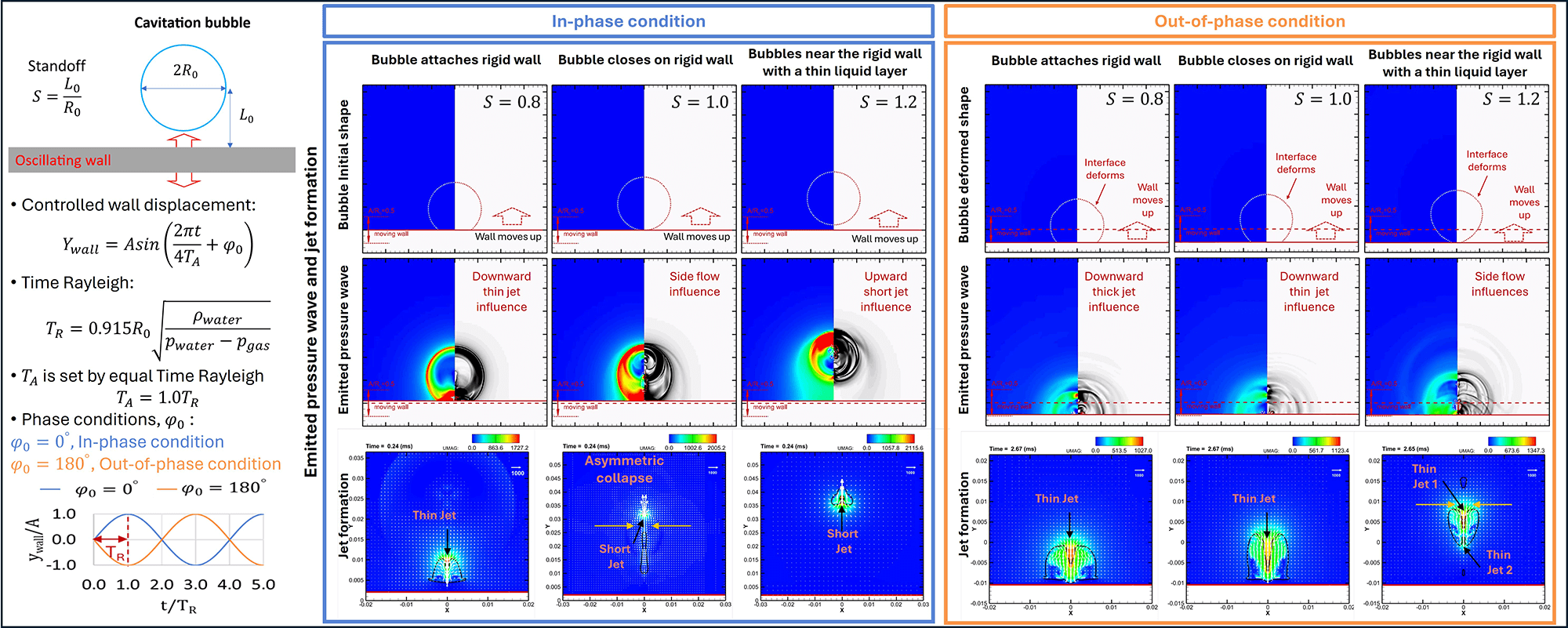
 Open Access
Open Access
ARTICLE
Manuel J. C. S. Reis1,*, Nishu Gupta2
CMES-Computer Modeling in Engineering & Sciences, DOI:10.32604/cmes.2025.073366
(This article belongs to the Special Issue: Applied Artificial Intelligence: Advanced Solutions for Engineering Real-World Challenges)
Abstract The forthcoming sixth generation (6G) of mobile communication networks is envisioned to be AI-native, supporting intelligent services and pervasive computing at unprecedented scale. Among the key paradigms enabling this vision, Federated Learning (FL) has gained prominence as a distributed machine learning framework that allows multiple devices to collaboratively train models without sharing raw data, thereby preserving privacy and reducing the need for centralized storage. This capability is particularly attractive for vision-based applications, where image and video data are both sensitive and bandwidth-intensive. However, the integration of FL with 6G networks presents unique challenges, including communication… More >
 Open Access
Open Access
ARTICLE
Yi-Ting Peng1,*, Chin-Laung Lei2
CMES-Computer Modeling in Engineering & Sciences, DOI:10.32604/cmes.2025.073258
(This article belongs to the Special Issue: Emerging Artificial Intelligence Technologies and Applications-II)
Abstract The rapid advancement of Large Language Models (LLMs) has enabled their application in diverse professional domains, including law. However, research on automatic judicial document generation remains limited, particularly for Taiwanese courts. This study proposes a keyword-guided training framework that enhances LLMs’ ability to generate structured and semantically coherent judicial decisions in Chinese. The proposed method first employs LLMs to extract representative legal keywords from absolute court judgments. Then it integrates these keywords into Supervised Fine-Tuning (SFT) and Reinforcement Learning with Human Feedback using Proximal Policy Optimization (RLHF-PPO). Experimental evaluations using models such as Chinese Alpaca More >
 Open Access
Open Access
ARTICLE
Rytis Maskeliūnas1, Robertas Damaševičius1,*, Audrius Kulikajevas1, Kipras Pribuišis2, Nora Ulozaitė-Stanienė2, Virgilijus Uloza2
CMES-Computer Modeling in Engineering & Sciences, DOI:10.32604/cmes.2025.072790
(This article belongs to the Special Issue: Artificial Intelligence Models in Healthcare: Challenges, Methods, and Applications)
Abstract This study introduces a novel voice cloning framework driven by Mordukhovich Subdifferential Optimization (MSO) to address the complex multi-objective challenges of pathological speech synthesis in under-resourced Lithuanian language with unique phonemes not present in most pre-trained models. Unlike existing voice synthesis models that often optimize for a single objective or are restricted to major languages, our approach explicitly balances four competing criteria: speech naturalness, speaker similarity, computational efficiency, and adaptability to pathological voice patterns. We evaluate four model configurations combining Lithuanian and English encoders, synthesizers, and vocoders. The hybrid model (English encoder, Lithuanian synthesizer, English More >
 Open Access
Open Access
ARTICLE
Rıdvan Yayla, Hakan Üçgün*, Onur Ali Korkmaz
CMES-Computer Modeling in Engineering & Sciences, DOI:10.32604/cmes.2025.072703
(This article belongs to the Special Issue: Environment Modeling for Applications of Mobile Robots)
Abstract Recent advancements in autonomous vehicle technologies are transforming intelligent transportation systems. Artificial intelligence enables real-time sensing, decision-making, and control on embedded platforms with improved efficiency. This study presents the design and implementation of an autonomous radio-controlled (RC) vehicle prototype capable of lane line detection, obstacle avoidance, and navigation through dynamic path planning. The system integrates image processing and ultrasonic sensing, utilizing Raspberry Pi for vision-based tasks and Arduino Nano for real-time control. Lane line detection is achieved through conventional image processing techniques, providing the basis for local path generation, while traffic sign classification employs a… More >
Graphic Abstract
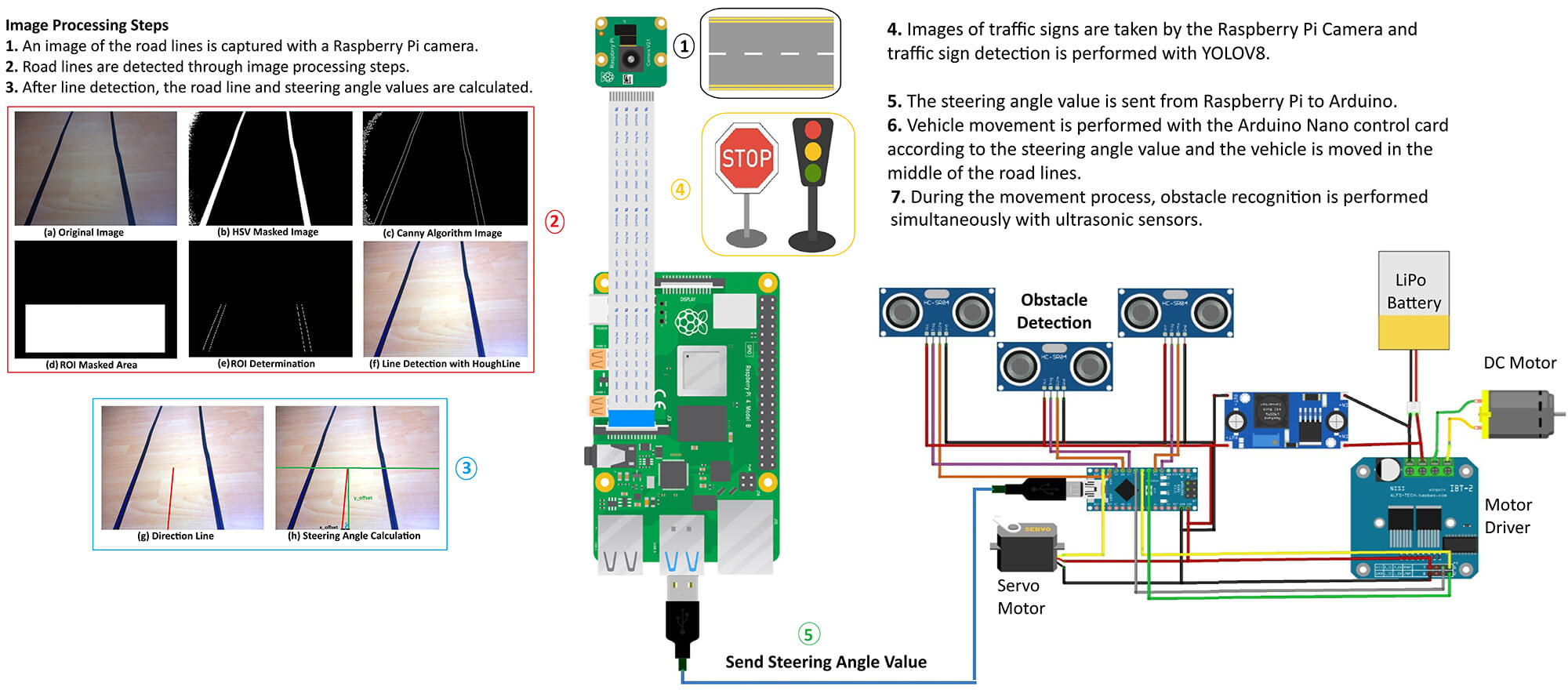
 Open Access
Open Access
ARTICLE
Ana Hermosilla1,2,*, Pedro Martinez-Julia3, Diego R. Lopez4, Antonio F. Skarmeta1,2
CMES-Computer Modeling in Engineering & Sciences, DOI:10.32604/cmes.2025.072607
Abstract In this study, we analyzed the processes involved in the resolution and enforcement of multi-domain network intent policies for intent-based networking (IBN). Previous studies on IBN analyzed the basis of the network intent resolution processes. These processes produce the artifacts required by network intent policy enforcement. Thus, we continued such studies with the inclusion of network intent policy enforcement in the analysis, for which we constructed a model that predicts the accuracy of a multi-domain network intent policy enforcement system. We validated the model by designing a new multi-domain network intent policy enforcement system, and… More >
 Open Access
Open Access
REVIEW
Somayah Albaradei1,2,*
CMES-Computer Modeling in Engineering & Sciences, DOI:10.32604/cmes.2025.072584
(This article belongs to the Special Issue: Advanced Computational Intelligence Techniques, Uncertain Knowledge Processing and Multi-Attribute Group Decision-Making Methods Applied in Modeling of Medical Diagnosis and Prognosis)
Abstract Cancer deaths and new cases worldwide are projected to rise by 47% by 2040, with transitioning countries experiencing an even higher increase of up to 95%. Tumor severity is profoundly influenced by the timing, accuracy, and stage of diagnosis, which directly impacts clinical decision-making. Various biological entities, including genes, proteins, mRNAs, miRNAs, and metabolites, contribute to cancer development. The emergence of multi-omics technologies has transformed cancer research by revealing molecular alterations across multiple biological layers. This integrative approach supports the notion that cancer is fundamentally driven by such alterations, enabling the discovery of molecular signatures… More >
Graphic Abstract
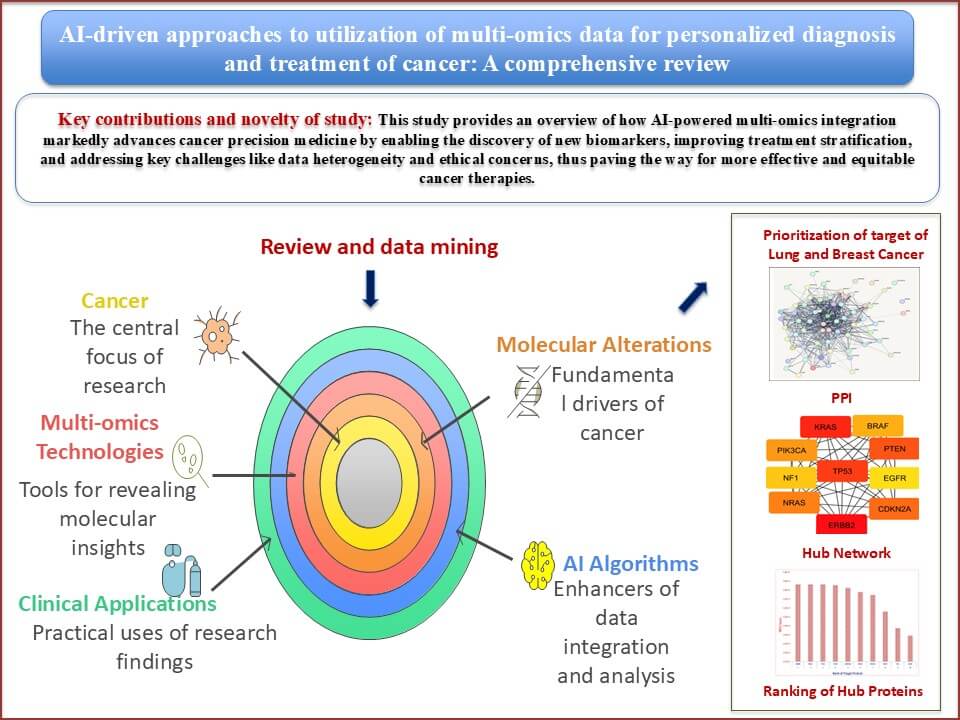
 Open Access
Open Access
ARTICLE
Arshad Riaz1,*, Misbah Ilyas1, Muhammad Naeem Aslam2, Safia Akram3, Sami Ullah Khan4, Ghaliah Alhamzi5
CMES-Computer Modeling in Engineering & Sciences, DOI:10.32604/cmes.2025.072513
(This article belongs to the Special Issue: Mathematical and Computational Modeling of Nanofluid in Biofluid Systems)
Abstract Peristaltic transport of non-Newtonian nanofluids with double diffusion is essential to biological engineering, microfluidics, and manufacturing processes. The authors tackle the key problem of Sisko nanofluids under double diffusion convection with thermal radiations and electroosmotic effects. The study proposes a solution approach by using Morlet-Wavelet Neural Networks that can effectively solve this complex problem by their superior ability in the capture of nonlinear dynamics. These convergence analyses were calculated across fifty independent runs. Theil’s Inequality Coefficient and the Mean Squared Error values range from 10−7 to 10−5 and 10−7 to 10−10, respectively. These values showed the proposed More >
 Open Access
Open Access
ARTICLE
Yassir M. Abbas1,*, Ammar Babiker2, Fouad Ismail Ismail3
CMES-Computer Modeling in Engineering & Sciences, DOI:10.32604/cmes.2025.074069
Abstract Accurately predicting the compressive strength of recycled aggregate concrete (RAC) incorporating supplementary cementitious materials (SCMs) remains a critical challenge due to the heterogeneous nature of recycled aggregates (RA) and the complex interactions among multiple binder constituents. This study advances the field by developing the most extensive and rigorously preprocessed database to date, which comprises 1243 RAC mixtures containing silica fume, fly ash, and ground-granulated blast-furnace slag. A hybrid, domain-informed machine-learning framework was then proposed, coupling optimized Extreme Gradient Boosting (XGBoost) with civil engineering expertise to capture the complex chemical and microstructural mechanisms that govern RAC… More >
 Open Access
Open Access
ARTICLE
Fatemeh Mobasheri1, Masoud Hosseinpoor1,*, Ammar Yahia1,2, Farhad Pourkamali-Anaraki3
CMES-Computer Modeling in Engineering & Sciences, DOI:10.32604/cmes.2025.072271
Abstract Self-consolidating concrete (SCC) is an important innovation in concrete technology due to its superior properties. However, predicting its compressive strength remains challenging due to variability in its composition and uncertainties in prediction outcomes. This study combines machine learning (ML) models with conformal prediction (CP) to address these issues, offering prediction intervals that quantify uncertainty and reliability. A dataset of over 3000 samples with 17 input variables was used to train four ensemble methods, including Random Forest (RF), Gradient Boosting Regressor (GBR), Extreme gradient boosting (XGBoost), and light gradient boosting machine (LGBM), along with CP techniques, More >
 Open Access
Open Access
ARTICLE
Lijuan Zhang1, Yu Zhou2, Jiawei Tian3,*, Fupei Guo4, Xiang Zhang4, Bo Yang4,*
CMES-Computer Modeling in Engineering & Sciences, DOI:10.32604/cmes.2025.071869
(This article belongs to the Special Issue: Emerging Artificial Intelligence Technologies and Applications-II)
Abstract In endoscopic surgery, the limited field of view and the nonlinear deformation of organs caused by patient movement and respiration significantly complicate the modeling and accurate tracking of soft tissue surfaces from endoscopic image sequences. To address these challenges, we propose a novel Hybrid Triangular Matching (HTM) modeling framework for soft tissue feature tracking. Specifically, HTM constructs a geometric model of the detected blobs on the soft tissue surface by applying the Watershed algorithm for blob detection and integrating the Delaunay triangulation with a newly designed triangle search segmentation algorithm. By leveraging barycentric coordinate theory, More >
 Open Access
Open Access
REVIEW
MirzaMurad Baig1, Muhammad Rehan Faheem2,*, LalKhan3,*, Hannan Adeel2 and Syed Asim Ali Shah4
CMES-Computer Modeling in Engineering & Sciences, DOI:10.32604/cmes.2025.073172
Abstract With growing urban areas, the climate continues to change as a result of growing populations, and
hence, the demand for better emergency response systems has become more important than ever. Human Behaviour
Classification (HBC) systems have started to play a vital role by analysing data from different sources to detect signs of
emergencies. These systems are being used inmany critical areas like healthcare, public safety, and disastermanagement
to improve response time and to prepare ahead of time. But detecting human behaviour in such stressful conditions is
not simple; it often comes with noisy data, missing… More >
Graphic Abstract
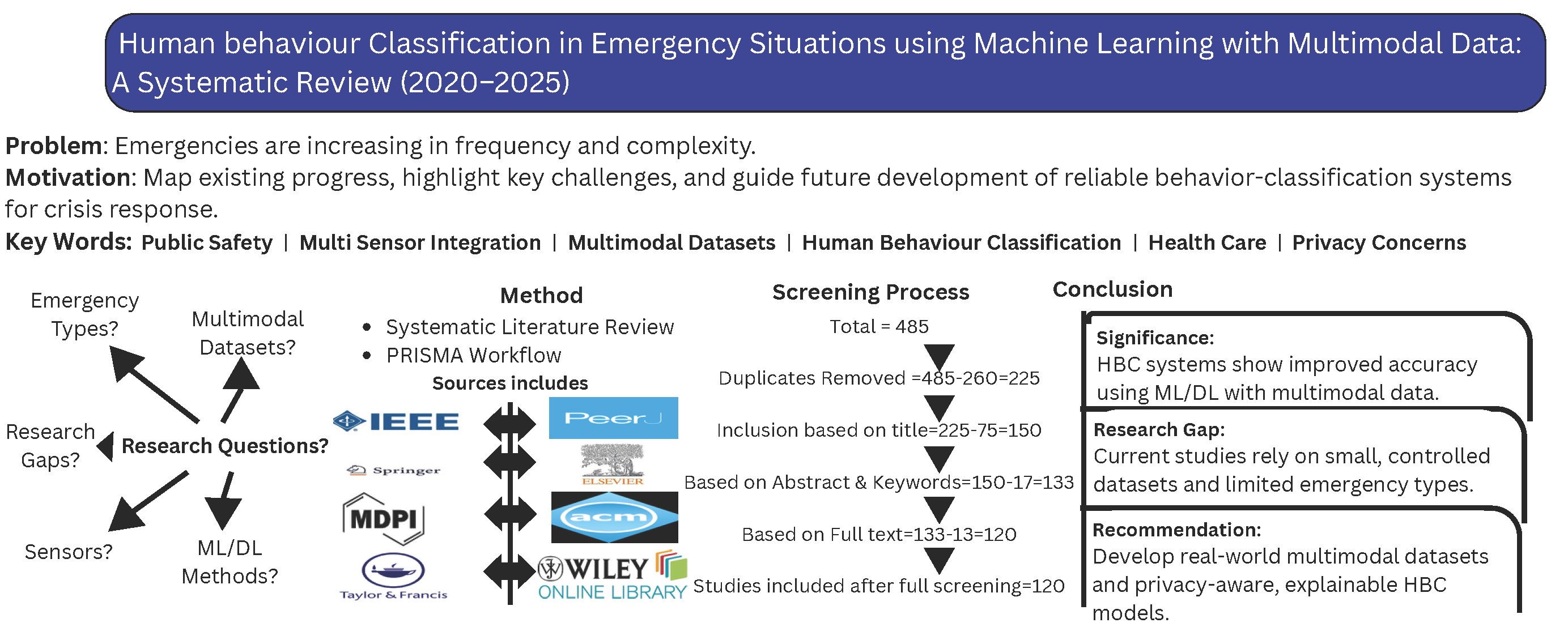
 Open Access
Open Access
ARTICLE
Tariq Ali1,2,*, Muhammad Ayaz1,2, Mohammad Hijji2, Imran Baig3, MI Mohamed Ershath4, Saleh Albelwi2
CMES-Computer Modeling in Engineering & Sciences, DOI:10.32604/cmes.2025.073169
Abstract The integration of renewable energy sources into electricity markets presents significant challenges due to the inherent variability and uncertainty of power generation from wind, solar, and other renewables. Accurate forecasting is crucial for ensuring grid stability, optimizing market operations, and minimizing economic risks. This paper introduces a hybrid forecasting framework incorporating fractional-order statistical models, fractal-based feature engineering, and deep learning architectures to improve renewable energy forecasting accuracy. Fractional autoregressive integrated moving average (FARIMA) and fractional exponential smoothing (FETS) models are explored for capturing long-memory dependencies in energy time-series data. Additionally, multifractal detrended fluctuation analysis (MFDFA) More >
 Open Access
Open Access
ARTICLE
Tanvir Fatima Naik Bukht1,2, Yanfeng Wu1, Nouf Abdullah Almujally3, Shuoa S. AItarbi4, Hameedur Rahman2, Ahmad Jalal2,5,*, Hui Liu1,6,7,*
CMES-Computer Modeling in Engineering & Sciences, DOI:10.32604/cmes.2025.071850
(This article belongs to the Special Issue: Recent Advances in Signal Processing and Computer Vision)
Abstract Human activity recognition (HAR) is crucial in fields like robotics, surveillance, and healthcare, enabling systems to understand and respond to human actions. Current models often struggle with complex datasets, making accurate recognition challenging. This study proposes a quantum-integrated Convolutional Neural Network (QI-CNN) to enhance HAR performance. The traditional models demonstrate weak performance in transferring learned knowledge between diverse complex data collections, including D3D-HOI and Sysu 3D HOI. HAR requires better extraction models and techniques that must address current challenges to achieve improved accuracy and scalability. The model aims to enhance HAR task performance by combining… More >
 Open Access
Open Access
EDITORIAL
Ndolane Sene1,*, Ameth Ndiaye2
CMES-Computer Modeling in Engineering & Sciences, DOI:10.32604/cmes.2025.075915
(This article belongs to the Special Issue: Analytical and Numerical Solution of the Fractional Differential Equation)
Abstract This article has no abstract. More >
 Open Access
Open Access
ARTICLE
Ramazan Özkan1,2, Mustafa Serdar Genç1,3,*, İlker Kayali1,4,5
CMES-Computer Modeling in Engineering & Sciences, DOI:10.32604/cmes.2025.072519
(This article belongs to the Special Issue: Computational Design and Modeling of Advanced Composites and Structures)
Abstract The optimization of turbine blades is crucial in improving the efficiency of wind energy systems and developing clean energy production models. This paper presented a novel approach to the structural design of small-scale turbine blades using the Artificial Bee Colony (ABC) Algorithm based on the stochastic method to optimize both mass and cost (objective functions). The study used computational fluid dynamics (CFD) and structural analysis to consider the fluid-structure interaction. The optimization algorithm defined several variables: structural constraints, the type of composite material, and the number of composite layers to form a mathematical model. The More >
 Open Access
Open Access
ARTICLE
Carlos Torres-Aguilar1,*, Pedro Moreno2,*, Diego Rossit3, Sergio Nesmachnow4, Karla M. Aguilar-Castro1, Edgar V. Macias-Melo1, Luis Hernández-Callejo5
CMES-Computer Modeling in Engineering & Sciences, DOI:10.32604/cmes.2025.069996
(This article belongs to the Special Issue: Innovative Computational Models for Smart Cities)
Abstract Solar chimneys are renewable energy systems designed to enhance natural ventilation, improving thermal comfort in buildings. As passive systems, solar chimneys contribute to energy efficiency in a sustainable and environmentally friendly way. The effectiveness of a solar chimney depends on its design and orientation relative to the cardinal directions, both of which are critical for optimal performance. This article presents a supervised learning approach using artificial neural networks to forecast the performance indicators of solar chimneys. The dataset includes information from 2784 solar chimney configurations, which encompasses various factors such as chimney height, channel thickness, More >
Graphic Abstract
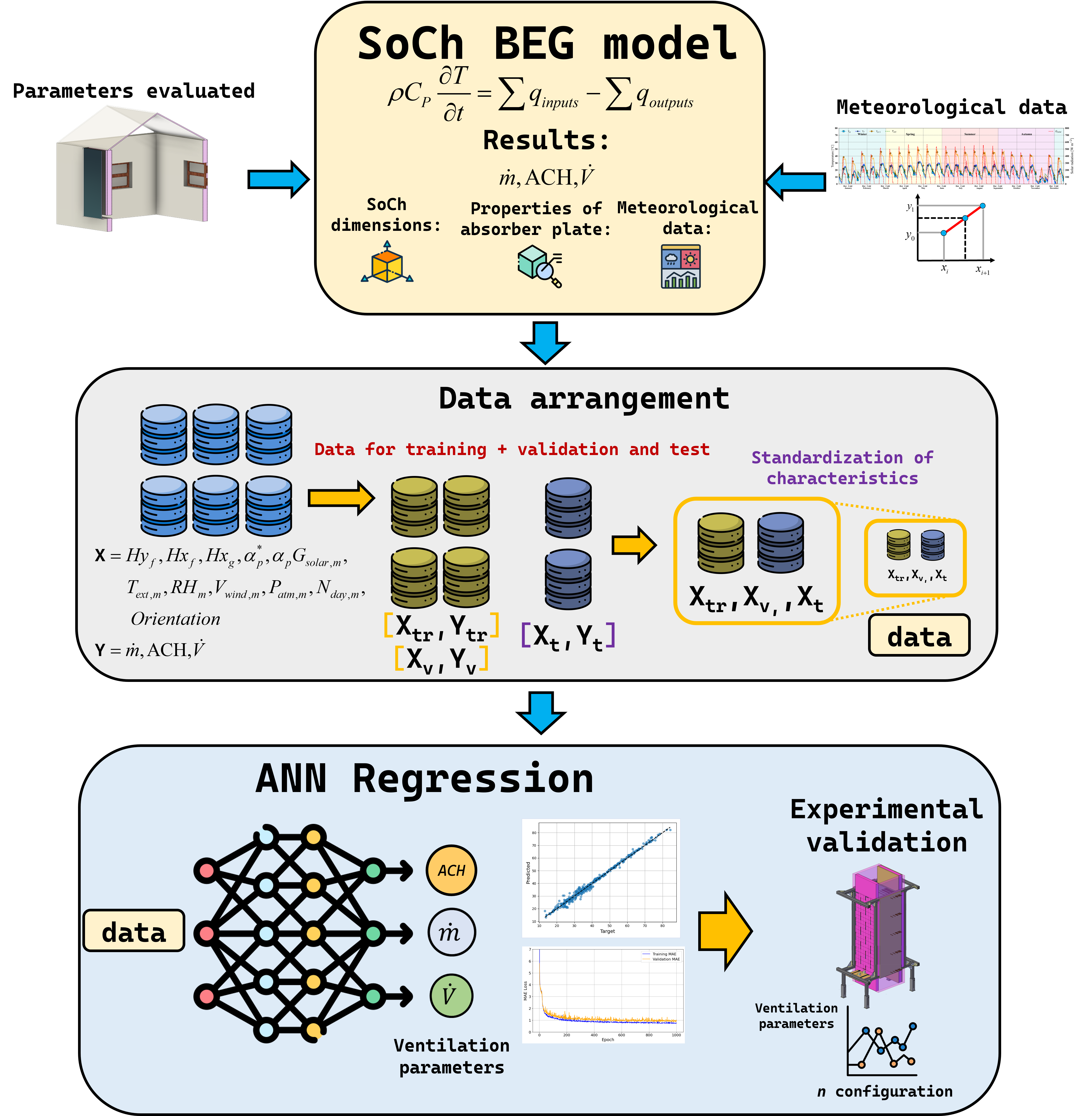
 Open Access
Open Access
ARTICLE
Muhammad Saad Farooqui1, Aizaz Ahmad Khattak2, Bakri Hossain Awaji3, Nazik Alturki4, Noha Alnazzawi5, Muhammad Hanif6,*, Muhammad Shahbaz Khan2
CMES-Computer Modeling in Engineering & Sciences, DOI:10.32604/cmes.2025.072023
(This article belongs to the Special Issue: Leveraging AI and ML for QoS Improvement in Intelligent Programmable Networks)
Abstract Quality of Service (QoS) assurance in programmable IoT and 5G networks is increasingly threatened by cyberattacks such as Distributed Denial of Service (DDoS), spoofing, and botnet intrusions. This paper presents AutoSHARC, a feedback-driven, explainable intrusion detection framework that integrates Boruta and LightGBM–SHAP feature selection with a lightweight CNN–Attention–GRU classifier. AutoSHARC employs a two-stage feature selection pipeline to identify the most informative features from high-dimensional IoT traffic and reduces 46 features to 30 highly informative ones, followed by post-hoc SHAP-guided retraining to refine feature importance, forming a feedback loop where only the most impactful attributes are More >
 Open Access
Open Access
ARTICLE
Jeongsu Park1, Moohong Min2,*
CMES-Computer Modeling in Engineering & Sciences, DOI:10.32604/cmes.2025.072261
Abstract Time series anomaly detection is critical in domains such as manufacturing, finance, and cybersecurity. Recent generative AI models, particularly Transformer- and Autoencoder-based architectures, show strong accuracy but their robustness under noisy conditions is less understood. This study evaluates three representative models—AnomalyTransformer, TranAD, and USAD—on the Server Machine Dataset (SMD) and cross-domain benchmarks including the Soil Moisture Active Passive (SMAP) dataset, the Mars Science Laboratory (MSL) dataset, and the Secure Water Treatment (SWaT) testbed. Seven noise settings (five canonical, two mixed) at multiple intensities are tested under fixed clean-data training, with variations in window, stride, and More >
Graphic Abstract

 Open Access
Open Access
ARTICLE
Hongrong Wang1,2, Hang Geng1,*, Jing Yuan1, Wen Zhang2, Hanmin Sheng1, Qiuhua Wang3, Xinjian Li4,5
CMES-Computer Modeling in Engineering & Sciences, DOI:10.32604/cmes.2025.073513
(This article belongs to the Special Issue: Incomplete Data Test, Analysis and Fusion Under Complex Environments)
Abstract Machine learning has emerged as a key approach in wildfire risk prediction research. However, in practical applications, the scarcity of data for specific regions often hinders model performance, with models trained on region-specific data struggling to generalize due to differences in data distributions. While traditional methods based on expert knowledge tend to generalize better across regions, they are limited in leveraging multi-source data effectively, resulting in suboptimal predictive accuracy. This paper addresses this challenge by exploring how accumulated domain expertise in wildfire prediction can reduce model reliance on large volumes of high-quality data. An active More >